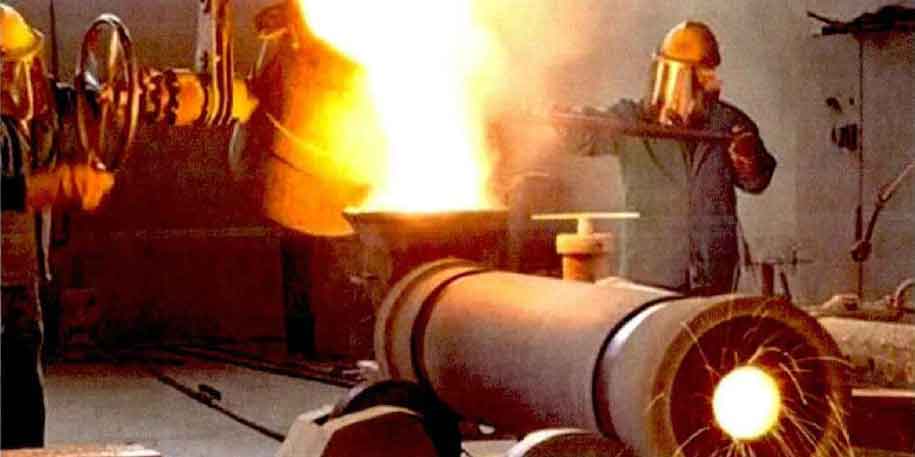
The quality of bimetallic composite pipe has always been the focus of research, and its bonding interface directly affects its performance. By improving the distribution of the transition layer and increasing the thickness of the transition layer, the bonding strength between the wear-resistant layer and the base can be improved. With the increase of pouring temperature, the grain boundary of the transition layer of high speed steel / ductile iron composite pipe becomes more blurred, the width of the bonding interface increases with the diffusion, and the hardness decreases gradually. Increasing the pouring temperature of the outer metal and the preheating temperature of the mold can keep the centrifugal casting process of the bimetal pipe warm, promote the diffusion of elements and facilitate the interface bonding. Fangdacheng et al. Studied the centrifugal casting compound law of outer 45 steel / inner Cr20 white cast iron sleeve, and gave the criteria for good metallurgical combination of inner and outer layers:

Where: t is the outer surface temperature, ℃; T refers to the surface temperature of the inner layer, ℃; TS is the solid point of metal, ℃.

Xu Chang et al. Studied the temperature field in the centrifugal casting process of the composite pipe with 35 steel as the outer layer and high chromium cast iron as the inner layer. The results show that increasing the pouring temperature of the outer layer and the preheating temperature of the mold are conducive to the interface bonding, while increasing the pouring temperature of the inner layer has little effect on the bonding interface. Further analysis of the composite interface shows that only when the pouring temperature of the inner layer is lower than the initial temperature of the outer layer, increasing the pouring temperature of the inner layer has little effect on the interface; If the pouring temperature of the inner layer is higher than the initial temperature of the outer layer, increasing the pouring temperature of the inner layer can significantly improve the interface bonding effect. In addition, the composition gradient transition zone of the bonding interface can reduce the thermal stress caused by the temperature difference between the inner and outer metal liquid, so that the mechanical properties of the inner and outer metal can be effectively complementary. Guominghai et al. Discussed the influence of the interface protector on the performance of the transition layer of the bimetal pipe with carbon steel as the outer layer and high chromium cast iron as the inner layer. As shown in the figure, its structure is strip pearlite and secondary cementite (white particles); After adding borax protective agent, the width of the transition layer increases and its morphology is clearer, and it is staggered with the metal on both sides in a dog tooth shape. Therefore, it can be considered that adding appropriate interface protective agent will help to form a more stable transition layer. To realize close metallurgical bonding at the interface is the key to determine the quality of bimetallic composite pipe. In order to ensure that the composite pipe has excellent mechanical properties, it is also necessary to deeply study the diffusion behavior of interface elements, the law of microstructure evolution and the interface bonding mechanism. At the same time, ProCAST simulation software is used to analyze the solidification process, temperature field and stress / strain field distribution of the bonding interface, The quantitative relationship between interface thickness and macro process parameters was characterized by experiments.
